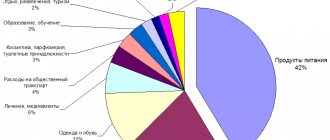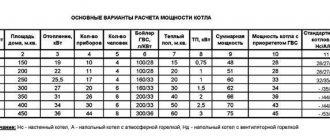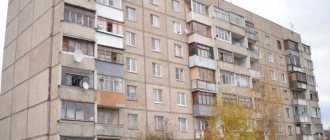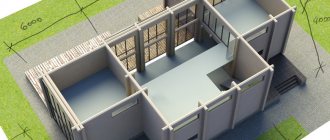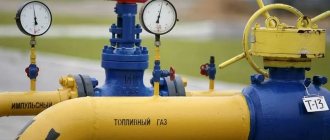Single rate tariff. For consumers, in the absence of differentiation of tariffs according to the connection scheme (excluding VAT). RUB/Gcal
| from 01/01/2021 to 30/06/2021 | 1965,61 |
| from 07/01/2021 to 12/31/2021 | 2055,25 |
| from 01.01.2022 to 30.06.2022 | 2055,25 |
| from 07/01/2022 to 12/31/2022 | 2148,98 |
| from 01.01.2023 to 30.06.2023 | 2148,98 |
| from 07/01/2023 to 12/31/2023 | 2239,75 |
| Single rate tariff. Population (including VAT). RUB/Gcal | |
| from 01/01/2021 to 30/06/2021 | 2358,73 |
| from 07/01/2021 to 12/31/2021 | 2466,30 |
| from 01.01.2022 to 30.06.2022 | 2466,30 |
| from 07/01/2022 to 12/31/2022 | 2578,78 |
| from 01.01.2023 to 30.06.2023 | 2578,78 |
| from 07/01/2023 to 12/31/2023 | 2687,70 |
| Single rate tariff. For consumers, in the absence of differentiation of tariffs according to the connection scheme (excluding VAT). RUB/Gcal | |
| from 01/01/2021 to 30/06/2021 | 1965,61 |
| from 07/01/2021 to 12/31/2021 | 2055,25 |
| from 01.01.2022 to 30.06.2022 | 2055,25 |
| from 07/01/2022 to 12/31/2022 | 2148,98 |
| from 01.01.2023 to 30.06.2023 | 2148,98 |
| from 07/01/2023 to 12/31/2023 | 2239,75 |
| Single rate tariff. Population (including VAT). RUB/Gcal | |
| from 01/01/2021 to 30/06/2021 | 2358,73 |
| from 07/01/2021 to 12/31/2021 | 2466,30 |
| from 01.01.2022 to 30.06.2022 | 2466,30 |
| from 07/01/2022 to 12/31/2022 | 2578,78 |
| from 01.01.2023 to 30.06.2023 | 2578,78 |
| from 07/01/2023 to 12/31/2023 | 2687,70 |
| Single rate tariff. For consumers, in the absence of differentiation of tariffs according to the connection scheme (excluding VAT). RUB/Gcal | |
| from 01/01/2021 to 30/06/2021 | 1965,61 |
| from 07/01/2021 to 12/31/2021 | 2055,25 |
| from 01.01.2022 to 30.06.2022 | 2055,25 |
| from 07/01/2022 to 12/31/2022 | 2148,98 |
| from 01.01.2023 to 30.06.2023 | 2148,98 |
| from 07/01/2023 to 12/31/2023 | 2239,75 |
| Single rate tariff. Population (including VAT). RUB/Gcal | |
| from 01/01/2021 to 30/06/2021 | 2358,73 |
| from 07/01/2021 to 12/31/2021 | 2466,30 |
| from 01.01.2022 to 30.06.2022 | 2466,30 |
| from 07/01/2022 to 12/31/2022 | 2578,78 |
| from 01.01.2023 to 30.06.2023 | 2578,78 |
| from 07/01/2023 to 12/31/2023 | 2687,70 |
| Single rate tariff. For consumers, in the absence of differentiation of tariffs according to the connection scheme (excluding VAT). RUB/Gcal | |
| from 01/01/2021 to 30/06/2021 | 1965,61 |
| from 07/01/2021 to 12/31/2021 | 2055,25 |
| from 01.01.2022 to 30.06.2022 | 2055,25 |
| from 07/01/2022 to 12/31/2022 | 2148,98 |
| from 01.01.2023 to 30.06.2023 | 2148,98 |
| from 07/01/2023 to 12/31/2023 | 2239,75 |
| Single rate tariff. Population (including VAT). RUB/Gcal | |
| from 01/01/2021 to 30/06/2021 | 2358,73 |
| from 07/01/2021 to 12/31/2021 | 2466,30 |
| from 01.01.2022 to 30.06.2022 | 2466,30 |
| from 07/01/2022 to 12/31/2022 | 2578,78 |
| from 01.01.2023 to 30.06.2023 | 2578,78 |
| from 07/01/2023 to 12/31/2023 | 2687,70 |
What determines the weather in your home?
Modern equipment allows you to maintain hot water supply standards to heating radiators without much human intervention. But the number on the device is one thing, but the actual heat in the apartment is completely different. The final result depends on many parameters:
- The climate of the area where you live. In Moscow, with its drier climate, the cold is felt less than in St. Petersburg with its dampness.
- Thermal conductivity of the structure. Houses built of brick have lower thermal conductivity than block houses. As a result, the temperature of the water in the heating radiators may be lower due to less heat loss.
- Location of the apartment in the house. Corner rooms freeze more than apartments located in the center of the house. Heat loss in heating radiators will be greater.
- Decoration Materials. Walls covered with heat-saving wallpaper retain heat longer. This reduces heat loss from radiators and central heating radiators.
- Heating radiator material. Cast iron batteries give off less heat than steel ones.
Temperature standards in external networks
All these indicators will affect the atmosphere in the house regardless of the heating temperature standards. It also doesn’t matter how hot the radiators or radiators in the apartment are.
Parameter control methods
System regulation
Heating can be adjusted. Methods:
- quantitative;
The parameters are changed by increasing or decreasing the amount of coolant supplied. Pumps increase the pressure in the system, valves reduce the speed of the carrier.
- qualitative;
With quality, the parameters of the coolant change, additives are added that change the characteristic indicators.
- mixed.
Uses both methods.
Method for reducing heat loss
The first, main condition for reducing heat loss is good thermal insulation.
The system needs to be optimized. Adjust a comfortable temperature inside living rooms, follow the recommendations for temperature conditions in utility and non-residential premises.
Comfort in home
Energy
How to calculate energy costs with your own hands, knowing the heat consumption?
It is enough to know the calorific value of the corresponding fuel.
The easiest way is to calculate the energy consumption for heating a house: it is exactly equal to the amount of heat produced by direct heating.
An electric boiler converts all consumed electricity into heat.
Thus, the average power of an electric heating boiler in the last case we considered will be equal to 4.33 kilowatts. If the price of a kilowatt-hour of heat is 3.6 rubles, then we will spend 4.33*3.6=15.6 rubles per hour, 15*6*24=374 rubles per day, and so on.
It is useful for owners of solid fuel boilers to know that firewood consumption rates for heating are about 0.4 kg/kWh. Coal consumption rates for heating are half as much - 0.2 kg/kWh.
Coal has a fairly high calorific value.
Thus, in order to calculate the average hourly consumption of firewood with your own hands at an average heating power of 4.33 kW, it is enough to multiply 4.33 by 0.4: 4.33 * 0.4 = 1.732 kg. The same instructions apply to other coolants - just look in the reference books.
Standard heating consumption per sq. m.
hot water supply
1 2 3
1.
Multi-apartment residential buildings equipped with centralized heating, cold and hot water supply, drainage with showers and baths
Length 1650-1700 mm 8.12 2.62
Length 1500-1550 mm 8.01 2.56
Length 1200 mm 7.9 2.51
2.
Multi-apartment residential buildings equipped with centralized heating, cold and hot water supply, drainage with showers without bathtubs
7.13 2.13 3. Multi-apartment residential buildings equipped with centralized heating, cold and hot water supply, drainage without showers and baths 5.34 1.27
4.
Heating consumption standard for MKD
Next, we will consider what the consumption standard established for heating is and how it is formed.
Based on Rules 354, the quality of heating is assessed taking into account changes in air temperature in the room.
The coolant (usually water) is heated to a predetermined temperature and circulates in the heating system.
Heat from the coolant enters the atmosphere, as a rule, thanks to heating radiators.
Standards for the consumption of utilities in Moscow
| No. | Name of company | Tariffs including VAT (rubles/cubic m) | |
| cold water | drainage | ||
| 1 | JSC "Mosvodokanal" | 35,40 | 25,12 |
Note. Tariffs for cold water and sewerage for the population of the city of Moscow do not include commission fees charged by credit institutions and payment system operators for services for accepting these payments.
Heating standards per 1 square meter
It should be remembered that you do not need to make calculations for the entire apartment, because each room has its own heating system and requires an individual approach. In this case, the necessary calculations are made using the formula: C*100/P=K, where K is the power of one section of your radiator battery, as stated in its characteristics; C is the area of the room.
Basic standards for thermal energy consumption for heating
In most cases, the wear and tear of urban heating networks is to blame, during which the generated energy partially goes into the air.
https://www.youtube.com/watch?v=Yoq13EYaDe4
Be that as it may, heating standards are not observed, so consumers have every right to file a corresponding complaint and demand a recalculation of tariff plans. The choice of one or another calculation method depends on whether a heat meter is installed in the house or apartment.
In the absence of a general house meter, tariffs are calculated according to standards, and those, as we have already found out, are determined by local authorities.
This is done through a special decree, which also determines the payment schedule - whether you will pay all year round or exclusively during the heating season.
What are the standards for the consumption of utilities in Moscow in 2022?
No. 41 “On the transition to a new system of payment for housing and utilities and the procedure for providing housing subsidies to citizens”, the indicator for heat supply applies:
- heat energy consumption for heating the apartment – 0.016 Gcal/sq. m;
- water heating – 0.294 Gcal/person.
Residential buildings equipped with sewerage, running water, baths with hot central water supply:
- water disposal - 11.68 m³ per person per month;
- hot water – 4.745.
- cold water – 6.935;
Housing equipped with sewerage, running water, baths with gas heaters:
- water disposal – 9.86;
- cold water – 9.86.
Houses with running water with gas heaters near the bathtubs and sewerage:
- 9.49 m³ per 1 person per month.
- 9,49;
Residential buildings of hotel type, equipped with running water, hot water supply, gas:
- cold water – 4.386;
- hot – 2,924.
- water disposal – 7.31;
Utility consumption standards
Payment for electricity, water supply, sewerage and gas is made according to established standards if an individual meter is not installed.
- From July 1 to December 31, 2015 – 1.2.
- From January 1 to June 30, 2022 – 1.4.
- From July 1 to December 31, 2022 – 1.5.
- From 2022 – 1.6.
- From January 1 to June 30, 2015 – 1.1.
Thus, if you do not have a collective heat meter installed in your house, and you pay, for example, 1 thousand rubles a month for heating, then from January 1, 2015 the amount will increase to 1,100 rubles, and from 2022 - to 1,600 rubles
Calculation of heating in an apartment building from 01/01/2019
The calculation methods and examples presented below provide an explanation of the calculation of the heating fee for residential premises (apartments) located in apartment buildings with centralized systems for supplying thermal energy.
Requirements for heat supply systems
The legislation of the Russian Federation imposes sanitary, epidemiological and fire safety requirements for heating systems. For safety reasons, heating devices comply with SanPin and SNiP regulations.
We talked more about the rules for organizing heat supply in a separate article.
Hygienic
When installing heating systems, optimal indoor microclimate conditions and air quality are taken into account.
Hygienic requirements are regulated and governed by the following conditions:
- no odor;
- uniform air distribution;
- no toxic emissions during operation;
- accessibility for repairs, cleaning and maintenance;
- absence of noise (what are the causes of noise in radiators?).
The temperature does not exceed 90 degrees. Systems heating above 75 degrees are equipped with protective guards. The concentration of chemicals in the air during operation of heat supply systems does not exceed the established safe exposure level.
Fire protection
Fire safety requirements for the construction and operation of heating systems in apartment buildings are regulated by SP 60.13330.2012. For safety reasons, hot water or steam is used as a coolant. In climatic regions with low temperatures, non-explosive substances are used to prevent the liquid from freezing.
In apartment buildings with a height of more than 9 floors, the installation of heat generators operating on gaseous fuel is allowed. Gas supply systems are equipped with automatic systems that shut off the supply of fuel in emergency situations. According to the standards, heat generators are installed in apartments that produce no more than 35 kW of heat. The total heating output does not exceed 100 kW.
How to pay less
Studies have shown that apartments in multi-storey buildings unprepared for the heating season lose almost 40% of the heat generated by radiators of central and autonomous networks. This means that residents pay for heating the atmosphere, but not the apartment.
To reduce resource leakage and heating fees, it is recommended to fulfill the following conditions:
- Install a heat meter, preferably a common one and an individual one. This will allow you to keep control over your consumption.
- Metal-plastic windows retain heat in an apartment more reliably than those with wooden frames. But the first ones need to be looked after and before the start of the heating season, call a specialist for preventive procedures and adjusting the frames. This saves up to 20% money and heat.
- A glazed balcony will also protect against waste of valuable service. A loggia that is tightly closed in winter prevents 10% of the heat from escaping to the street.
- Modern-type radiators contribute to a greater transfer of heat energy to the room than old cast-iron radiators, even with the same utility supply.
- The thermostats installed on new radiators will not allow the apartment owner to heat the non-residential area. By covering a temporarily empty room, you can save some money.
- The biggest losses occur through the walls and ceiling. If you insulate them, then almost half of the heat received will remain in the room. For this purpose, blocks made of mineral wool, expanded polystyrene, and other materials are used.
The last resort is the most expensive, but it will reduce heating bills and improve the quality of heating.
Every resident can calculate the amount of contribution in an apartment or private house. You just need to install collective and individual heat meters. Metering devices will allow you to save the heat energy received and avoid the multiplying factor added in the absence of meters. You should not forget about insulating your home.
Watch the video: “Free heating course.”
Free consultation by phone! Moscow and region: ; St. Petersburg and region:
Specifics and other features
It is also possible that the premises for which the calculation is being made may have other specific features; not all of them are similar or exactly the same. These could be indicators such as:
- the coolant temperature is less than 70 degrees – the number of parts must be increased accordingly;
- absence of a door in the opening between two rooms. Then you need to calculate the total area of both rooms in order to calculate the number of radiators for optimal heating;
- Double-glazed windows installed on windows prevent heat loss, therefore, fewer battery sections can be installed.
When replacing old cast iron batteries. which ensured normal temperature in the room, for new aluminum or bimetallic ones, the calculation is very simple. Multiply the heat output of one cast iron section (average 150 W). Divide the result by the amount of heat of one new part.
How to calculate consumed thermal energy
If for one reason or another there is no heat meter, then to calculate thermal energy you must use the following formula:
Let's look at what these symbols mean.
1. V denotes the amount of hot water consumed, which can be calculated either in cubic meters or in tons.
2. T1 is the temperature indicator of the hottest water (traditionally measured in the usual degrees Celsius). In this case, it is preferable to use exactly the temperature that is observed at a certain operating pressure. By the way, the indicator even has a special name - enthalpy. But if the required sensor is missing, then as a basis you can take the temperature regime that is extremely close to this enthalpy. In most cases, the average is approximately 60-65 degrees.
3. T2 in the above formula also denotes the temperature, but of cold water. Due to the fact that it is quite difficult to penetrate the main line with cold water, constant values are used as this value, which can change depending on the climatic conditions outside. So, in winter, when the heating season is in full swing, this figure is 5 degrees, and in the summer, when the heating is turned off, 15 degrees.
4. As for 1000, this is the standard coefficient used in the formula in order to obtain the result in gigacalories. It will be more accurate than if you used calories.
5. Finally, Q is the total amount of thermal energy.
As you can see, there is nothing complicated here, so we move on. If the heating circuit is of a closed type (and this is more convenient from an operational point of view), then the calculations must be made slightly differently. The formula that should be used for a building with a closed heating system should look like this:
Now, accordingly, to the decoding.
1. V1 indicates the flow rate of the working fluid in the supply pipeline (typically, not only water, but also steam can act as a source of thermal energy).
2. V2 is the flow rate of the working fluid in the return pipeline.
3. T is an indicator of the temperature of a cold liquid.
4. T1 – water temperature in the supply pipeline.
5. T2 – temperature indicator that is observed at the outlet.
6. And finally, Q is the same amount of thermal energy.
It is also worth noting that the calculation of Gcal for heating in this case depends on several notations:
- thermal energy that entered the system (measured in calories);
- temperature indicator during the removal of working fluid through the return pipeline.
Methods for setting the optimal mode
Many devices are programmed for the temperature of the coolant. When it reaches the required values, the unit turns off briefly. The user can set the temperature himself. The parameters also change depending on the weather. For example, the optimal operating mode of a gas boiler in winter is obtained at values of 70-80 C. In spring and autumn - at 55 - 70 C.
Thanks to the thermostat, you can set the desired climate in the room. And the coolant will heat up and cool down with a specific intensity. At the same time, the device reacts to temperature changes in the house and outside. This is the optimal operating mode for a floor-standing gas boiler. Although with the help of such devices it is possible to optimize the mounted model. At night, the settings can be reduced by 1-2 degrees.
If you want solid efficiency and savings from the boiler, purchase the right model. The following are some examples.
What is Gcal
We should start with a related definition. A calorie refers to the specific amount of energy required to heat one gram of water to one degree Celsius (at atmospheric pressure, of course). And due to the fact that from the point of view of heating costs, say, at home, one calorie is a tiny amount, gigacalories (or Gcal for short), corresponding to one billion calories, are used for calculations in most cases. We've decided on this, let's move on.
The use of this value is regulated by the relevant document of the Ministry of Fuel and Energy, published back in 1995.
Note! On average, the consumption standard in Russia per square meter is 0.0342 Gcal per month. Of course, this figure may vary for different regions, since everything depends on climatic conditions
So, what is a gigacalorie if we “transform” it into values that are more familiar to us? See for yourself.
1. One gigacalorie is equal to approximately 1,162.2 kilowatt-hours.
2. One gigacalorie of energy is enough to heat a thousand tons of water to +1°C.
Computations
It is almost impossible to calculate the exact value of heat loss for an arbitrary building. However, methods for approximate calculations have long been developed that give fairly accurate average results within the limits of statistics. These calculation schemes are often referred to as calculations based on aggregated indicators (meters).
Along with thermal power, there is often a need to calculate daily, hourly, annual thermal energy consumption or average power consumption. How to do it? Let's give a few examples.
Hourly heat consumption for heating using enlarged meters is calculated using the formula Qot=q*a*k*(tin-tno)*V, where:
- Qot - the desired value in kilocalories.
- q is the specific heating value of the house in kcal/(m3*S*hour). It is looked up in directories for each type of building.
The specific heating characteristic is tied to the size, age and type of building.
- a is the ventilation correction factor (usually 1.05 - 1.1).
- k is the correction factor for the climatic zone (0.8 - 2.0 for different climatic zones).
- tin - internal temperature in the room (+18 - +22 C).
- tno - street temperature.
- V is the volume of the building together with the enclosing structures.
To calculate the approximate annual heat consumption for heating in a building with a specific consumption of 125 kJ/(m2*S*day) and an area of 100 m2, located in a climate zone with the GSOP=6000 parameter, you just need to multiply 125 by 100 (house area ) and by 6000 (degree days of the heating period). 125 * 100 * 6000 = 75,000,000 kJ, or approximately 18 gigacalories, or 20,800 kilowatt-hours.
To recalculate the annual consumption into the average thermal power of heating equipment. it is enough to divide it by the length of the heating season in hours. If it lasts 200 days, the average heating power in the above case will be 20800/200/24=4.33 kW.

